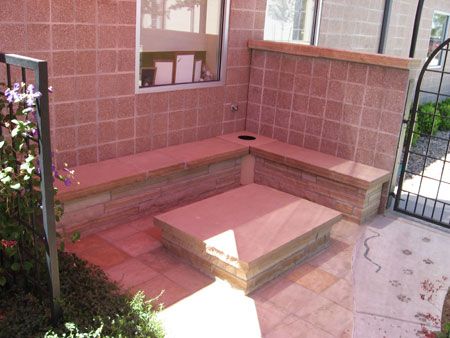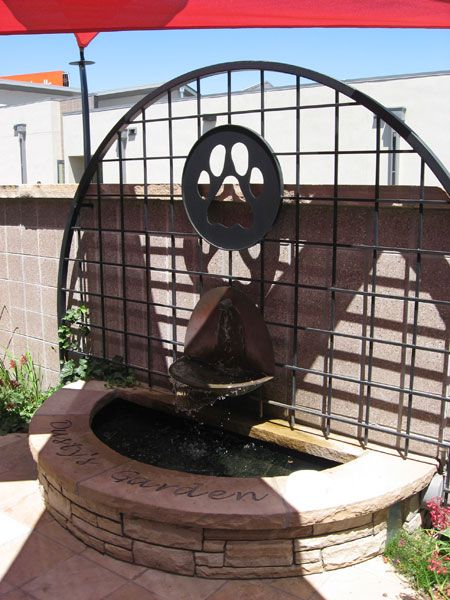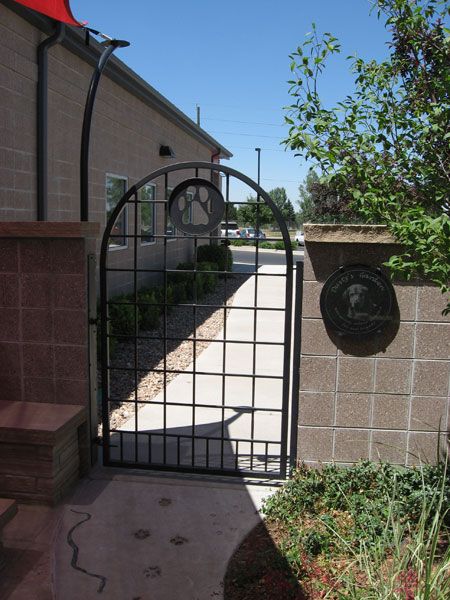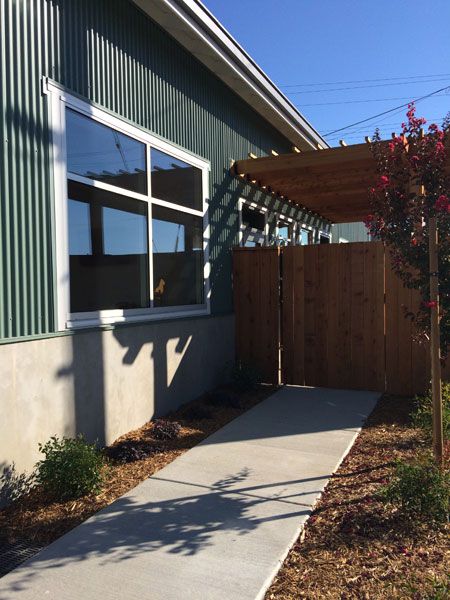The long goodbye
A euthanasia garden might be the key to a peaceful goodbye when your veterinary clients face parting with a beloved pet.
Under the dappled light of the declining sun, the pet, in the arms of a loved one, drifts gently into that good night. It's a lovely image, but reality says such a lovely exit requires careful planning. And that's where you can help.
"We've heard that many pet owners love these spaces. I would have loved to have this last time I faced this hard day with my dogs. Not going in the hospital would have been excellent," says Heather Lewis, AIA, NCARB, a partner at Animal Arts, an architecture firm in Boulder, Colorado. "It's best to give owners a choice though. Outdoors spaces may not be as comfortable for every client." Lewis offers these four steps to create serene spaces for pets and their owners as they offer up their final goodbyes.
Step 1: Set the scene

Photo courtesy of Heather Lewis, AIA, NCARB, Animal ArtsHere are some essential considerations for your outdoor euthanasia area:
• Plan a shady spot. You may use a partial roof to accomplish this effect in all seasons.
• Create a secure enclosure. While an elderly or sick animal may not be very mobile, Lewis says you would not want to test that assumption. The garden should be secure and safe.
• Create seclusion. You're aiming for a euthanasia space away from eye and earshot of other daily activities that occur outside the hospital. It should be private, quiet and serene, Lewis says.
• Plan a cleanable environment. After all, this is an exam environment, so the space should have a cleanable area for procedures and access to cleaning tools, such as a hose bib.
One caution: Make sure this area isn't too sterile feeling. "You don't want this space to feel like the loading dock," Lewis says. "Think garden, but cleanable in the area where the exam is taking place. This isn't impossible. Plants can be contained in planters, for example, leaving the ground surface free and cleanable."
Step 2: Work as a team

Photo courtesy of Heather Lewis, AIA, NCARB, Animal ArtsHere's what you'll need to do to make this space work for your veterinary team:
• Provide an inside nearby location to store clean and ready-to-go comfort items for the animal, such as thick Pilates mats, air mattresses or blankets to retrieve and place in the outdoor space when it's ready for the client and pet.
• Locate a controlled substance lock box inside and out of sight of clients but near the outdoor exam space.
• Locate the outdoor space near the other exam spaces so that the technicians and doctors aren't going out of their way to accommodate the location.
• Provide a method for communicating the status of the outdoor space (when it's reserved, when it's in use, when it needs cleaning and so on) to prevent confusion.
Step 3: Plan for clients' comfort

Photo courtesy of Heather Lewis, AIA, NCARB, Animal Arts
Consider these factors to make your space soothing for clients:
• Create comfortable seating, such as cleanable outdoor chairs.
• Offer shading from the sun.
• Consider adding a fountain or other soothing element. "I love fountains," Lewis says." They are so soothing and the white noise masks sounds, which increases a sense of privacy."
• Plan a separate exit from the outdoor space so the client doesn't need to come back through the hospital.
• Create storage for convenience supplies such as tissues, a trash can and hand wipes.
Also remember, noise is an issue. "Although to be honest, a certain amount of soft background noise is desirable so the client has more speech privacy and can't be heard if she's crying," Lewis says. "A fountain or white noise machine or soft music can create this background noise."
Step 4: Plan for patients' comfort

Photo courtesy of Heather Lewis, AIA, NCARB, Animal ArtsUse these steps to create a comfortable space for pets:
• Don't do outdoor euthanasia for pets who've spent their whole life without venturing outdoors. This space is best for pets who love the out of doors. "It would be a perfect solution for my big sweet Labs, for example, when it's time for them to cross the rainbow bridge," Lewis says.
• Ideally you'll bring the pet directly into the yard from outside rather than going through the hospital to keep the experience quiet. Many pets in this state aren't mobile, so an easy path from car to outdoor exam is best.
• Offer experiences of nature. If possible, the outdoor euthanasia space would incorporate an adjacent garden so that the pet can relax to the sounds, sights and smells of natural places rather than a hospital setting.
• Create a comfortable surface for resting. Pets at end of life are often in pain. It's essential that they're rested on something soft and comfortable.